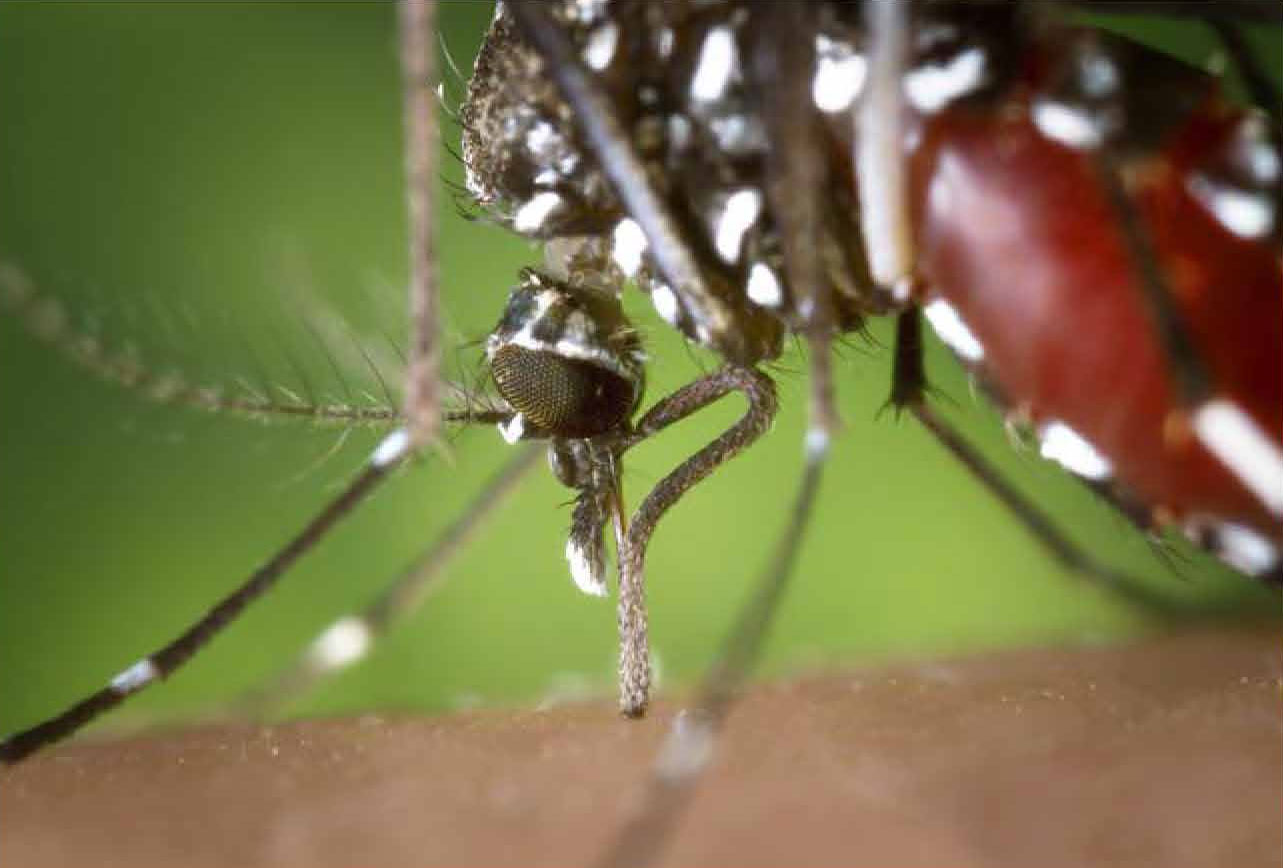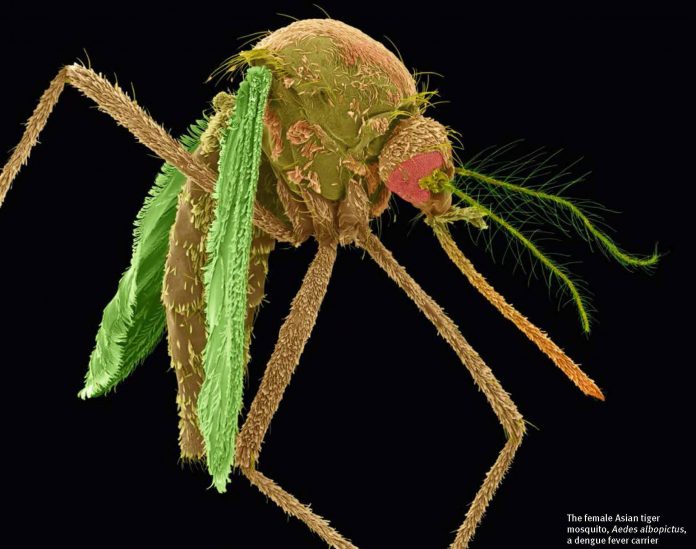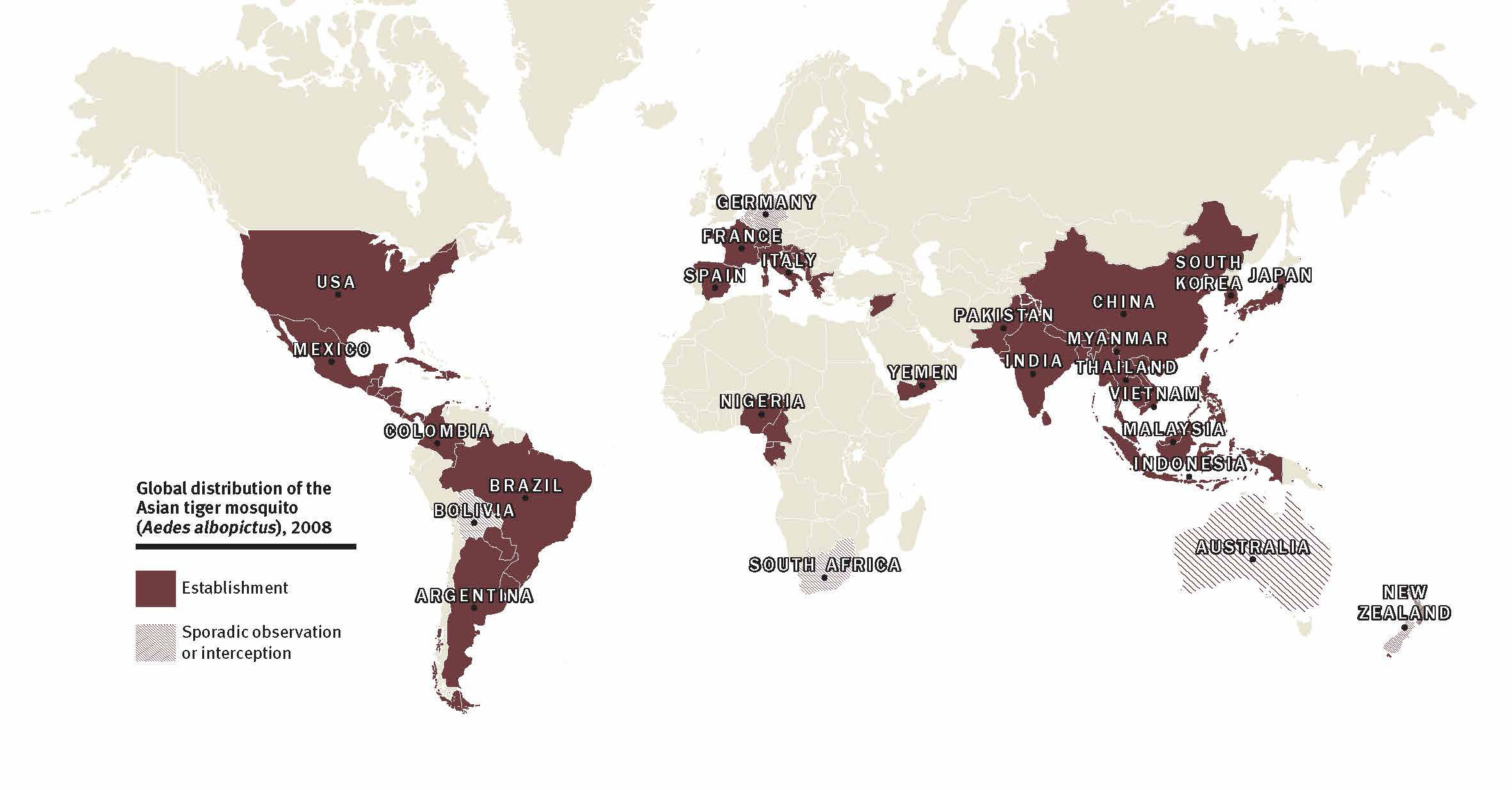by Associate Professor Gregor Devine
Mosquitos – those bloodsucking demons that have roamed the face of the Earth for more than 100 million years – have adapted and evolved to feed, multiply and venture into distant lands. But no other species does it better than the deadly Asian tiger mosquito (Aedes albopictus), notoriously accomplished travellers that hail from the forests of Asia. They are here to ensure contagion lives on.
First described in 1894 by British-Australian entomologist Frederick A. Askew Skuse, specimens from this ilk were found in Calcutta, Bengal. By the late 1990s, they were a common sight across Asia, particularly China, Korea, Japan and the Indochina peninsula.
While the species once bred in the water collecting in tree holes and the leaves on forest floors, the international trade in used tyres – in which eggs are deposited – have aided the tiger mosquito’s spread to the other continents. They now thrive in rural, suburban and urban human environments, breeding everywhere from a bottle cap to a puddle in a tarpaulin.
Their unparalleled ability to acclimatise has seen them surviving a broad range of climates, subsisting on murky water, and even reaching the larval stage in just a few days in hot weather. Furthermore, the tiger mosquito’s eggs are able to withstand desiccation and remain viable for many months – allowing them to develop after coming into contact with a new water source before going on to start a new colony.

Viruses like dengue and chikungunya have proven to be major global problems. Like the tiger mosquito, they move around with human beings. An individual who gets infected in one country can carry the virus to another, where local tiger mosquitos reside. While strains are not becoming stronger, they are moving around at a very rapid pace. Scientists have reported that it is only a matter of time before the virulent Asian tiger mosquito establishes itself in non-tropical Israel, following increased occurrences of the diseases stemming from overseas contraction.
Check out the rest of this article in Asian Geographic No.110 Issue 2/2015 ) here or download a digital copy here












